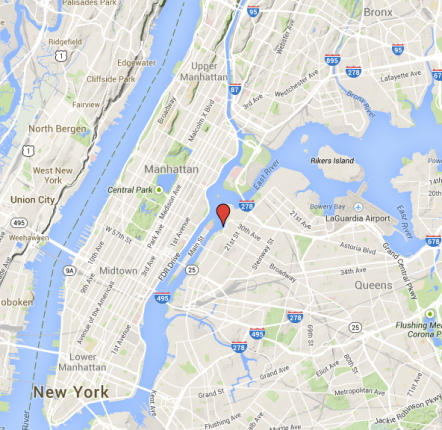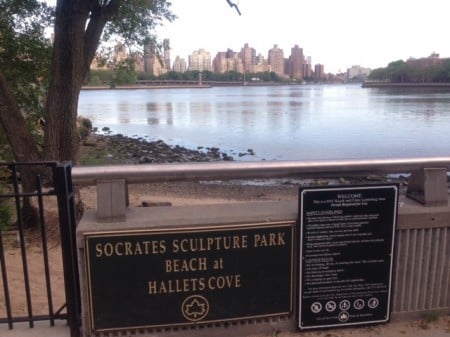Plugging a Source of Pollution to Hallets Cove in the East River
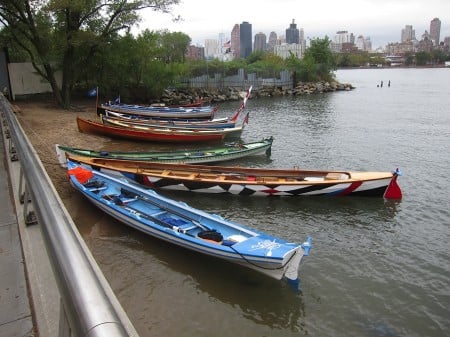
Boats at Hallets Cove. (Photo by Rob Buchanan / NYC Water Trail Association)
View more images on our Flickr site
This is how the story goes: Water sampling produces data. Data informs citizens. Citizens advocate for improvements and engage regulators. Regulators find the source of pollution—and eliminate it.
On Hallets Cove in the East River, we’re in the final chapter in this now-familiar story.
In 2011, Riverkeeper assisted the New York Water Trail Association and The River Project in the creation of the largest of eight citizen science projects testing local waters consistent with the methods developed by Riverkeeper and our science partners at Lamont Doherty Earth Observatory and CUNY Queens College for our ongoing Hudson River Estuary water sampling project. Dozens of dedicated citizen scientists have taken weekly samples since then at nearly 40 locations around New York City, using independent labs to assess water quality.
The monitoring program utilizes an indicator bacteria called Enterococcus. High counts of this bacteria indicate that sewage or other fecal matter is contaminating the water, and samples at Hallets Cove have frequently had counts exceeding Environmental Protection Agency-recommended guidelines for safe swimming. Both the frequency and degree of contamination have been troubling at the Hallets Cove sampling site, a sandy beach next to Socrates Sculpture Garden, which is a launch on the NYC Water Trail used by the Long Island City Community Boathouse for public programming. (Riverkeeper has assisted in several shoreline cleanups and other public programs here as well.)
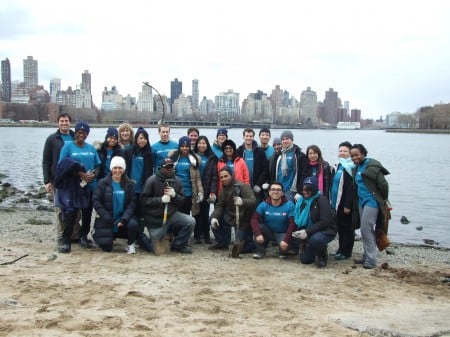
HSBC volunteers joined Riverkeeper for a beach cleanup at Hallets Cove to mark World Water Day in 2013. (Photo by Dana Gulley / Riverkeeper)
Bathers should be warned, according to EPA guidelines based on the best available science, if the Enterococcus count exceeds 60 in a single 100-ml sample of water. The average count at this location in weekly sampling from May to October since 2012 is 349 — more than eight times that level. Two-thirds (67%) of samples have failed to meet EPA guidelines for safe swimming, and the longterm measures of water quality fail both EPA’s recommended criteria for safe primary contact recreation. (See the data.)
High contamination levels have been found in dry weather as well as after rain, suggesting that contamination can’t be ascribed solely to the city’s primary known source of contamination, combined sewer overflows (CSOs) that discharge billions of gallons of untreated or partially treated sewage and street water annually.
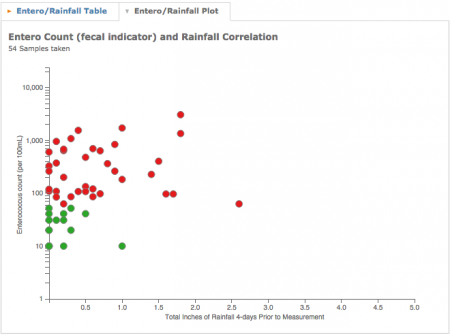
Plot shows Enterococcus counts at Hallets Cove and cumulative four-day rainfall totals. Red indicates a count over 60, the EPA’s suggested guideline for safe swimming.
Advocates, including the New York Water Trail Association, Long Island City Community Boathouse and HarborLAB, have asked the New York City Department of Environmental Protection (DEP) for studies to identify the sources of contamination.
The DEP came through, and dye testing at the Astoria Houses, a NYC Housing Authority development with 22 buildings, found one building that had sewage flowing into a storm sewer that discharges directly into Hallets Cove. The Housing Authority now has 30 days to fix the problem.
Without data, citizens wouldn’t have had the information they needed to identify this problem and advocate for change.
Further data collection will show whether or not this is the only or most significant source of contamination to Hallets Cove.
The many people who enjoy recreation here on the East River have these local advocates and the DEP to thank for gathering the data necessary to improve water quality.

